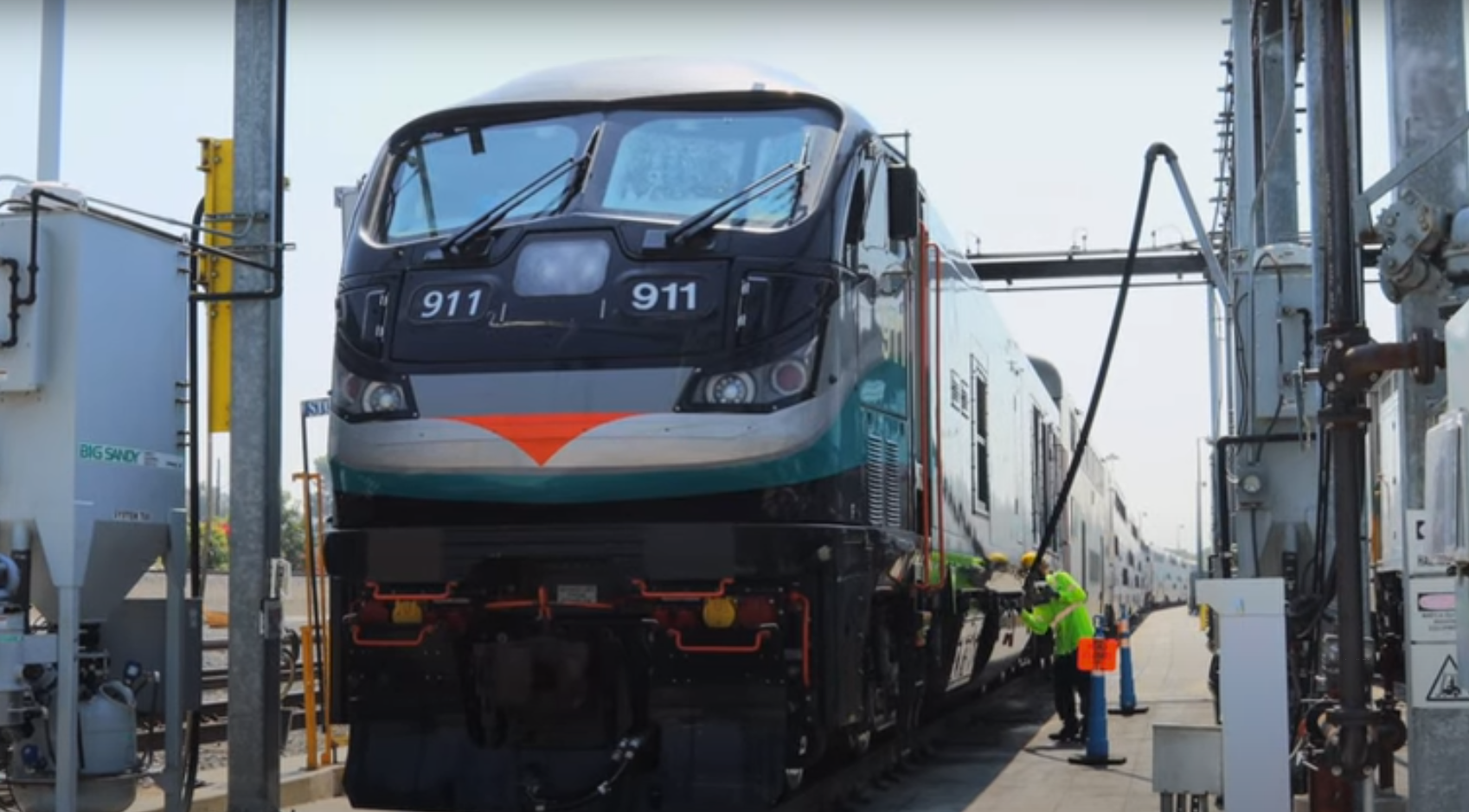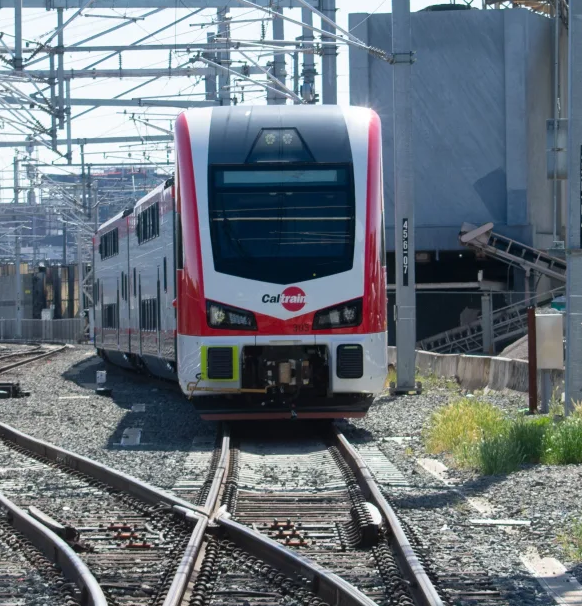Caltrain took a major step forward with its $2.4 billion electrification project last weekend, with the delivery of the first electric train set, spotted above on Caltrain's yard tracks between College Park and San Jose Diridon stations.
Caltrain, obviously, has had its hands full with the crash in San Bruno. So it's understandable that there hasn't been any fanfare for the arrival of the new trains. "We’re planning a coming out party for them in the near future, you’ll get an invite as soon as we can lock a date down," wrote Caltrain spokesperson Dan Lieberman in an email to Streetsblog.
The new trains may look familiar to anyone who has spent time in Europe. Although these units were constructed in Utah, the design is a derivative of the KISS family of electric multiple unit commuter trains by Stadler Rail of Switzerland. The European version has been running since 2008 (Streetsblog has ridden them in Switzerland and France and found them to be fast, smooth and comfortable--as unlike Caltrain's current fleet of museum-piece diesel trains as one can imagine).
And while the new train is here, Caltrain won't be able to run it under its own power for a while, since the overhead wire isn't yet energized--any movements will require a tow with a diesel, as seen below:
That said, the agency will start doing the first live tests of its overhead electrification wire in a few months. "We expect to have Segment 4 energized by June, after which the AEM-7 will be used for testing purposes," said Lieberman.
He's referring to 40-year-old, legacy locomotives from Amtrak's Northeast Corridor that Caltrain intercepted on their way to the scrap yard. These locomotives, seen below with fresh Caltrain livery, will be used for testing only, so that if there's a power surge, or a pantograph (the thing on the roof of the locomotive that touches the overhead wire and draws current to the motors) gets snagged as adjustments are made, they won't damage brand new trains.
Streetsblog predicts that as long as no major damage gets done to the AEM-7s in testing, Caltrain will end up keeping them and running some of its legacy rolling stock behind these classic locomotives (nicknamed "toasters"). AEM-7s have served Amtrak and commuter railroads on the East Coast for nearly a half-century. Somehow, these reliable workhorse little engines seem to have a way of finding new jobs whenever they get marked for scrap.
Either way, once the testing is completed with the AEM-7, Caltrain will be ready to start running its new Stadler trains under the new wires. The Stadlers have already been tested under their own power at the federal testing center in Colorado, so they should be fine.
More from Caltrain:
The electrification of the Caltrain system will deliver major benefits to the communities that it serves. Electrification will reduce Caltrain’s greenhouse gas emissions and eliminate the particulate matter caused by the aging diesel engines. Electrified service will lay the foundation to meet the goal of tripling capacity by 2040, the equivalent of carrying 5.5 lanes to U.S. Highway 101. Service will become both more frequent and more comfortable, as state-of-the-art electric trains replace Caltrain’s current aging fleet. The project has also created thousands of jobs locally and throughout the country, both to electrify the corridor and to assemble the new trains, which include components from across the country. Finally, the infrastructure that is being installed will be compatible with future high-speed rail on the corridor.
Electrifying a major commuter rail system in California is a major step towards eliminating emissions from the transportation sector. Caltrain's electrification project is partially funded by the overall state rail modernization project, also known as California High-Speed Rail.
Unfortunately, Southern California is still not on board. Around the same time Caltrain was getting its first electric trains, its sister commuter rail agency in Los Angeles--Metrolink--was boasting about buying yet another generation of polluting diesel locomotives (sorry, "biodiesel"/renewable diesels). But just like "clean coal" and other green-washing monikers, the truth is renewable diesel's biggest selling point is probably that it allows entrenched fossil fuel interests to continue refining fuel, resulting in negligible reductions in emissions when the entire fuel production process is factored in. Meanwhile, Southern California politicians, including Assembly leadership Anthony Rendon and Laura Friedman, are still actively blocking California train electrification funds. As previously reported, Rendon and many Democrats take money from oil companies.







